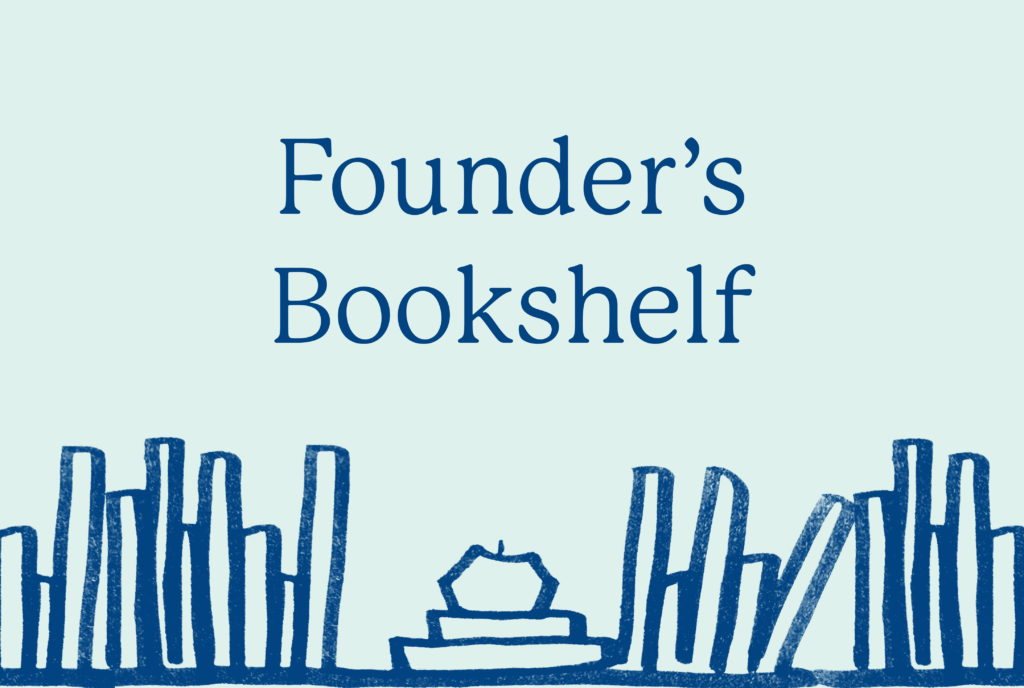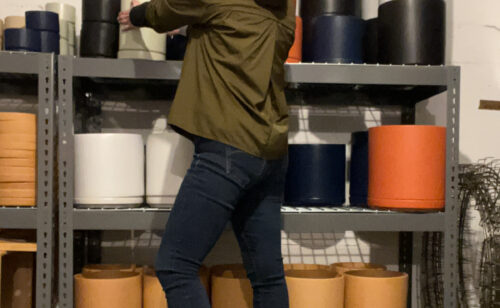Top Tools and Resources for Online Business Owners

Before dishwashers, washing machines, robot vacuums, microwaves, takeout, grocery delivery, etc., it wasn’t easy to run a household. You needed a person out making money and a person at home keeping everything livable. With all of these tools making it easier to take care of our homes, those responsibilities now take less time and we can focus on other things. Similarly, there are a variety of tools and resources that can help you get things done for your business. If you find the right group of tools, you can let the “housekeeping” take care of itself, and get back to work. Here is a list of the tools and resources I personally use to run Aeolidia.
Communication
Our team uses Gmail through Google Workspace for work email, which we have integrated with Hubspot, a robust CRM (customer relationship management) platform. This allows us to communicate with potential clients and keep track of our sales funnel. If you need a CRM and you run an ecommerce business, I would recommend Gorgias instead of Hubspot.
Hubspot lets you schedule calls using their software, but I prefer Calendly, because of the easy integration with Gmail (I can choose specific dates and times and paste them directly into an email).
Since my team is fully remote, we use Slack for our internal communications and Zoom for face-to-face meetings. We assign each other work in ClickUp, which we use for both client projects and internal tasks. I also use Slack groups to stay in touch with communities I’m part of, such as Growclass and other Shopify agencies. I’m also a Goldman Sachs 10,000 Small Businesses alumnus, and they have a private platform to communicate with other alumni.
We use Typeform to ask clients for feedback about our projects – it’s such simple, intuitive software for sending surveys.
We use Loom to record quick videos for just about everything! For communicating with clients, explaining tasks that need to be done, onboarding team members, and creating tutorials. It’s hard to imagine how I did things before Loom came into my life!
I use beautiful.ai to create slide shows which I use for in-person speaking and for webinars. Vimeo is where I upload and save recordings of webinars.
We love Postable for sending printed cards to clients and colleagues. You can choose from a variety of great designs from our some of our favorite stationery designers, or upload your own design. It’s easy to handwrite a message (to be printed in a handwriting font), too! We use this for welcomes, thank yous, birthdays, holidays, and just because!
Sometimes a card isn’t enough, and you want to send a gift. This got so simple for me when I found Goody for gifting! Goody lets you send gifts to people whether you know their mailing address or not, and there’s a lovely little “unboxing” animation, personalized message, and you can decide if your recipient can trade the gift you selected for something else from their huge catalog.
Organization and projects
Notion is a versatile tool that we use as a database for clients, projects, ideas, and so much more. I wasn’t a big fan of it at first, but I started using a second copy of it for my personal life, and I love how organized I can make it! It’s my replacement for Evernote, which used to be my “second brain.”
ClickUp is our project management tool which includes a built-in timer, task templates, multiple views, dashboards, to-do lists, and a knowledgebase where we store Standard Operating Procedures. It is essential to our process.
I don’t have to worry about backing up my data, and my team and I can share our files with each other and our clients using both Google Drive and Dropbox. If my computer explodes, I won’t have to panic, because all my stuff is safe in the cloud. Why both, you ask? It’s hard to explain. I think I’d recommend Drive if you’re mostly sharing files with others or have a lot of documents and spreadsheets that you can open natively in Drive. I’d suggest Dropbox if you need to work from your files regularly, and can’t do so online, such as editing graphics.
Aeolidia’s designers use Figma to design and present web design mocks to clients. It’s saved a ton of confusion about how wide a design is going to be (browsers often shrink gifs or jpgs to fit the window), and we can do neat things like show how a mouseover effect will work, etc. I used to use Adobe Creative Cloud to work with graphics (my team still does), but that’s such a small part of my job now (hooray for delegating), that I get by with using Photopea in my browser for quick image adjustments, and then TinyPNG to be sure my file size is small.
Zapier comes in handy for automating business “housekeeping” tasks between different software programs. I’ve used it for a bunch of things over the years, and right now my main uses are to move info from Hubspot to Convertkit (our email marketing program; more on that later) and to Notion.
LastPass is a password management tool that we use to securely store and share passwords. How did we ever do without it? If I had to start over, I might use 1Password, because of the security breaches LastPass has had.
Marketing
I’ve found that a mailing list is the best way to stay in touch with the people who are interested in what you do. Klaviyo is my tool of choice for ecommerce businesses because of its deep integration with Shopify. Convertkit works well for Aeolidia’s service-based business model. I used Hubspot’s email for years, but there was a lot I didn’t like about it (particularly how I kept ending up in peoples’ spam folders!).
We use WordPress to run our website, but if I had an ecommerce site, I would absolutely use Shopify, and here are the reasons why. We use a variety of plugins with our WordPress installation, but since most of our readers have shops and don’t need WordPress, I’ll spare you the details. We use Coschedule for social media scheduling which integrates seamlessly with WordPress, making it quick and easy to promote new blog posts.
I keep track of my data using Google Analytics, and the reports pages in our various software programs.
Paperwork, Finance, Payroll, and HR
SignNow is the tool we use for contracts. It streamlines the document signing and approval processes.
We use Quickbooks Online to keep track of invoices and payments from clients, as well as to analyze data and prepare all our finances for tax time.
Gusto is our HR and payroll platform. It’s how we manage payroll processing, benefits management, and HR administration tasks. If you need to pay employees, I highly recommend Gusto! We can pay salaried employees and contractors through Gusto. For contractors who are out of the country, we rely on Wise to transfer money internationally (used to be called Transferwise). We occasionally use PayPal to transfer funds.
I used to use Mint to keep track of my personal finances and budget (and as an easy way to double-check business transactions while not stepping on our bookkeeping team’s toes). They’re closing that software, though, and I’ve since switched to Monarch, while I really like! It’s not free, but it’s also not a big pain, like Mint was.
These tools are the foundation of our virtual office, allowing us to collaborate efficiently and effectively. What are your favorite business tools and resources?
The Founder’s Bookshelf

These are all books which have significantly influenced Aeolidia for the better, and which I recommend to any business owner.
Browse Posts
A Newsletter That Goes Beyond Shopify 101
It’s easy to find beginner info about ecommerce online. If you’re past that? Subscribe to our newsletter for advanced strategies and need-to-know info for established shops.
Learn how the top shops grow:
"*" indicates required fields
13 thoughts on “Top Tools and Resources for Online Business Owners”
Leave a Comment
Related Posts
Let's take your online shop to the next level
The Shopify websites we design have a reputation for substantial improvements to ecommerce conversion rates and online sales. Let's talk!
 Grab my guide to the 10 main ways to grow traffic and optimize to boost sales.
Grab my guide to the 10 main ways to grow traffic and optimize to boost sales.



Great info as always! I use a lot of these but am excited to check out the rest out. We use Lastpass for password management, it can be synced across devices, etc and is pretty good so far!
Thanks, Emily! I’ve gotten a lot of recommendations for Lastpass, and I’m going to check it out!
Arianne,
Do you use wordpress + shopify together? I LOVE my shopify store– and all the amazing apps that run my back end (like Yotpo for reviews, Stitch for inventory, Jilt for cart recovery, etc), but would love my blog, which is hosted on Shopify to have access to all the amazing WordPress plug-ins.
Hi Cheri,
Yes, we’ve set up a handful of clients on a platform that is a combo of Shopify and WordPress. The two programs don’t actually integrate with each other, and our solution has been to make them look the same while keeping it very clear how to get back to the shop.
In your particular case, I would remove the “cart” icon (or replace it with a static “cart” icon with no number), and adjust the search to say “search the shop” vs. “search the blog” on the two sites. I’d duplicate the top menu on both sites, and voila! Looks seamless to the shopper, BUT you do have to update the site on two different platforms, AND you have to remember to make any changes to the header/footer/navigation of your sites on both templates.
Feel free to email me (contact page link, above), if you’d like to talk more about this!
I’m wondering if you have any additions or changes to your favorite software and apps since writing this post. So much changes so fast!
Oh yes, this would be a great article to revisit. Thanks for the nudge, Catherine!
I have been using Daylite for years. It helps manage projects, clients and new contacts. I don’t use it to its full potential but what I do use, i give a thumbs up.
Fantastic article! Glad to know I’m already on the right track with some of them but made a note of some new ones as well!
Thanks, Jen!
This is so generous to share! We’ve been using Asana as our project manager, which is working fine so far, but will check out ClikUp. Lots to review here, Thanks for sharing!
I think if your needs are simple, Asana is probably great! ClickUp can handle more complexity, from my understanding, and works wonderfully for us. Great to hear from you, Jason!
Great roundup of top tools and resources! 🚀 Love how you’ve covered a wide range of options. Super helpful for streamlining my workflow. Thanks for sharing!
That makes my day, Lindsey!